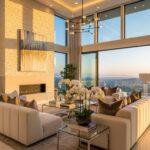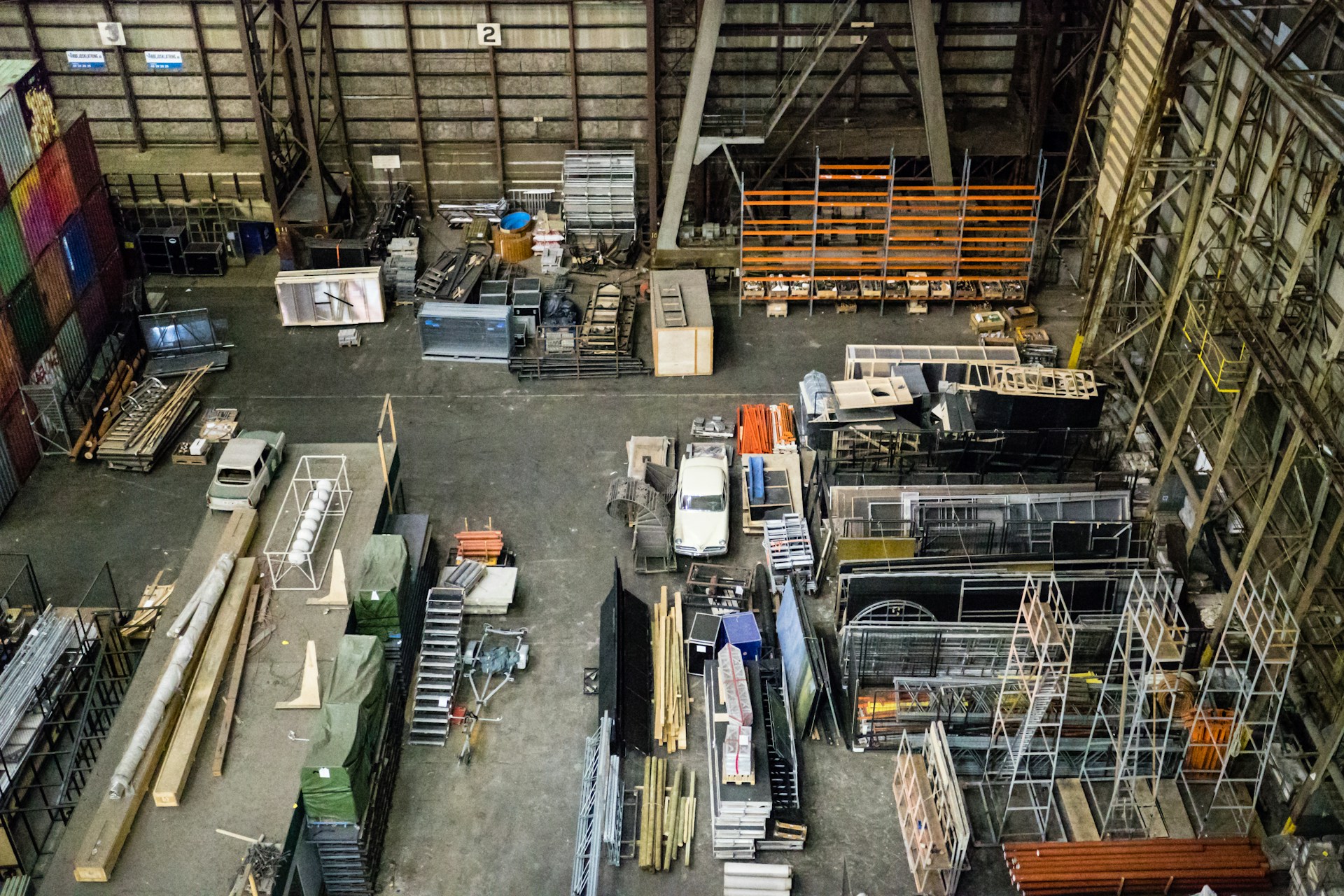Addressing space as a complex playground of sensory improvisations, my installations’ nature is to warp our perceptions by toying with space as a teetering situational balance. The search is to find the uncanny moments in the work’s awkward pauses, sweet spots of tension, potentials for action, and the explosions of material cacophony.
How would you describe your art practice?
If my art practice were to have a band name I would call it Storm Rider. When I begin any piece, I am acutely aware of the space where the work will exist. This is where the build-up starts, I am instantly drawn to an area and/or the architecture of the space and work towards warping one’s initial perception of the space in order to alter his/her experience of interaction. I aim to create a heightened awareness of our bodies moving through space.
It is the moments before a rain shower when you feel this heaviness and thick moisture in the air you breathe or with lighting, there is charged and compacted stillness in the moment when you feel the current of electricity about to touch down and your arms have goose bumps, or that feeling before lightning strikes, or tornadoes with their weird stillness building up in ungodly heat and then all goes quiet. It’s the build-up to before the release and then it’s over with all its destruction, power, and intensity. When I do an installation I feel just that, a storm that comes in, and I am riding that wave holding on until the waters calm. Once it does, I am done.First, I create a bunch of reject objects that are not intended to work on their own, but when you bring them together they become something more, a relationship between the forms blossoms and makes the conversation more dynamic.
All materials for me are fair game — the phrase, “One man’s trash is another man’s treasures,” can be applied. In some installs, I have utilized objects such as deflated basketballs that I found outside and then painted pink because I was attracted to its form (in Islands of Material Memory). In Synth Garden, I used the outside of a rubber wheel from a 16-wheeler. These kind of objects are reflective of the space in which I exist. Then, I have objects that I am attracted to and that have personal connections such as in Islands of Material Memory, my little brother’s bowling ball, and the boogie board is one that my family has had and we have used since I was a little baby beach babe. There are objects that have strong material memory, that are linked to my family, that would not be for sale, and then there are the fully manipulated forms that are created from scratch. This melting pot of materials sets the stage for the kind of conversation that I’d like to address in my work.Your titles seem to hint at something larger than mankind, but whose force is also innately feminine (Cosmic Egg, Shakiti Blooms, etc.) How would you describe the interplay between these themes and the work that you make?
Yes, there is a feminist undercurrent to the work that is covertly woven into the dialogue. I look at the female as creator of all, and my personal research dives into looking at the structure of matriarchal societies as well as the qualities and portrayal of female deities from around the world. I am interested in creating work that has undercurrents of the feminine as an abstract portrayal or symbol of power and woman as creator. Some works are more overtly referential to the feminine by title whereas others become a type of “bodyscape,” or reference the body blending into the landscape, as seen in Momma Gaia, the permanent land art work I created at Art Farm in Nebraska.How do you come up with your titles? Do you reference books of songs you’ve read or heard?
Titles are a touchy one to describe, sometimes the title comes before the work and is a phrase I have been working on and it rings true when it finds the work. But most of the time, there are general themes I am thinking about and I work off of those words. To me, words are a tough material to formulate as they feel so concrete in their nature and I prefer not to overtly convey what the work is about but instead give hints to what it alludes to. For me, I am interested in iconographic images that hold an agelessness and I am interested in subverting these forms that allude to things beyond that of the earthly plane.
In your recent installation, Islands of Material Memory, you employ ordinary, everyday materials, for example, paint buckets and light bulbs, in a way that reminds me of Jessica Stockholder’s work. The effect is both intriguing and humorous. What’s the significance of your material choices and what do you hope to convey with such materials?
The installation, Islands of Material Memory, was shown at the Arlington Arts Center from January – April 2015, in the group show titled No Place, No You or Me. Also during this exhibition, I installed a temporary public artwork on the AAC front lawn, titled The Wormhole (Rainbow Worm). To describe these works in the short and sweet manner, I wanted with my public artwork to create a work that brings a colorful enclave, full of a playful joy that will bring people in to look as they explore the environment and the crazy rainbow worm.
The Wormhole (Rainbow Worm) also reflected my desire to create an even more collaborative element by casting the net wide, reaching out and asking people, bringing them all together to help create the Rainbow Worm’s knitted and crocheted sleeve. The phrase, “If you want to go fast go alone; If you want to go far go together,” is an African proverb I once heard, that has always been a phrase that resonated and stuck with me. It has shown itself in my recent leanings as a development where my interest is in trying to create situations and works that can unify people together with a creative goal. Having goals and something to work towards is a powerful tool both individually and as a whole. It seems to nurture and encourage a collective consciousness that takes hold of the work, weaving in multiple voices beyond what just my one voice can have. I am interested in the act of sharing an experience, of creating spaces of memory moments, creating worlds or environments that have the potential for contemplation and play for others.
As for the installation titled Islands of Material Memory, you can see how a lot of my work is about the process of sculpting the material. From a collection of sources I drew green velvet from an abandoned house in Vermont, a rainbow of buckets provided by a friend that were Bucket-Factory rejects, my childhood boogie board from life in California, to my brothers swirled bowling ball, to sand from a friend’s previous installation work, as well as many other conceptual materials. A lot of my interior installations are created through the gathering of materials and the alterations to such materials. It is the melding of these materials to create harmony within the piece during the time of the installation that is to me, like the making of magic. The exterior public artworks usually have to be more planned out and pre-choreographed. I am excited by the freedom in both — the indoor ones, coming from the intuitive nature of tapping into the language of material relationships, and the outdoor works are more about the direct one-on-one relationship between the work and the space or environment it exists within. Interior space is more of a blank canvas space for the illusionary theme that can be transformed, and the exterior is more rooted in the surrounding nature, and your work has to become part of its turf, so it’s about trying to find this playful middle-ground relationship.
Has your art practice been influenced by other artists? Do you see your own work as relating to any current movement in visual art or culture?
Yes, Jessica Stockholder, whom you mentioned, is someone I admire, also Constantin Brancusi Isamu Noguchi, Salvador Dali, Judy Pfaff, Sabina Ott, Erika Verzutti, Lynda Benglis, Katharina Grosse, Arlene Shechet, James Turrell, Ernesto Neto, Anish Kapoor, etc.
I also am attracted to old monuments that still command space, like the pyramids of Giza, Mayan temples, and especially Zen gardens. I am fascinated by the concept of the garden/parks as spaces of the in-between. They are constructed order and the transitioning converging point where the chaos of the city and wildness of nature meet. The artists and monuments I’ve mentioned all create work dealing with the co-existence between man and nature, and also how man shapes his/her environment, creating a fantasy-scape or surreal landscape.
Damn Jen, these are tough but solid legitimate questions. I personally am moved by art that both reaches my heart and engages my mind. I enjoy the duality of work that also repulses me and draws me closer, I don’t want an easy-please in viewing and engaging with work. I prefer work that is challenging and makes me reevaluate my values, and those works are often hard to find. The rare gems though that I love and keep me looking at art are because of those amazing moments when you come across a piece that has the “it” the thing you can’t put your finger on, that holds the magic. Art to me is the interpretation of one’s perceptions on life and how they choose to contribute to society. It’s important the intention behind creation that is not fuelled by hate or domination/power.Do you have any advice for other young artists?
Rejection and failure are part of any artist’s life regardless of the time in their career — what counts is perseverance and vision. I try to emulate in my art practice to follow the notion of actions speak louder than words. It is one thing to “want” something hardcore and quite another to go after that dream with the hard work, perseverance, vision and action to make it happen. I have found when I write my goals down, and make it so I can see them every day and constantly reevaluate my goals from the big guys to the smaller more accomplishable tasks, things start to happen.It is also invaluable to find those core people in your life that are your grounded rocks, your touchstones. This path is not the same for any person, but it is enlightening to ask every artist and creative thinker how they have juggled making things work in both life and their art practice. Two values to this; one you get to know people on a more intimate level but also you learn a lot from others. My dad always would say “You can learn as much from a bad example as you can a good one!” In the end though, I believe there really is no “right or wrong path.” Everyone’s path is unique to them, and it is more about the experience and learning to be present at every moment, as well as opening yourself up for introspection and reflection on every life experience that you find yourself situated in. One of my close friends told me a piece of advice her soccer coach once told her, and it was exactly what I needed. It was a reminder that when your dog-assed tired from running up and down the field as a Midfielder, going relentlessly back and forth, back and forth, most of the time the ball may not be there but you have to believe that by you just taking the action to be in that space, the ball will come. So advice, for myself, I’m in it for the long haul, I’m not interested or worried in being the sprinter, tortoise and hare style. Be genuine with your work and your self, know that for every ten applications that you send out, maybe hopefully something may pull through. Last thought would be to say that one should appreciate and share your thanks and good vibes to all those who help you and believe in your work, they are truly special and are the ones who will always help in keeping your work alive.
Everyone has their own piece of advice in how they got to where they are now, which is fascinating in its own right and is also why contemporary literature is bombarded with the oh-so-many self-help books/what- to-do-if/memoirs. What I find most exciting yet also totally overwhelming is the amount of opportunities I’ve received as I am starting my venture in an art career because there really is no “one” path or steps you have to take or dictated list of rules in how to get to the top. You make your own top, bottom, in-between plane of where you want your work to exist within. You as the artist have the power to make what you want because you are the creator of your work. Yes, I acknowledge that when the work is shared with the world it takes on its own identity but the work itself, you control. But to hell with the haters and don’t let anyone try to box you into this neat little package — being an artist is empowering because only you have the power over creating your work, so whatever your art’s magic is, it’s all yours and your choice to share.
Is there something you are currently working on or excited about that you can talk about?
I just completed an installation work titled Crystal Kiss in the group show, Tilling Phase, curated by my friend, Amy Hughes Braden. I was invited to join this group of artists, including our Art Farm artist friend, Margo E”lsayd, in Hyattsville, MD. The exhibition space was an abandoned building that the non-profit Art Works will be soon be breaking grounds and renovating to make their new home.
I was so excited when I was contacted about this group show because as I was looking at the building’s architecture I just fell in love with the greenhouse space that was attached to the building. I describe it as a rainbow blasting to bring color and light to a space, giving it a new life. This inspiration has lead my research in continuing to bring my work outdoors. I want to have a more direct link to the sky above the architectural landscape space, for the sky to act as the grounded element where my works becomes the middle ground. I want to have a direct attachment to the sun, which has led me to working with prisms and crystals. It also poses the question of how can I work with the night sky, which has then led me to working with glow in the dark paint and different phosphorescent colors. Crystal Kiss is an installation with the one continuous knot worm body that is taking over the greenhouse and winding itself through the space. The body of the worm was painted white with glow in the dark paint so that when the sun set it would have it would be glowing. I wanted the environment to have the neutrality of white, so that the color is brought in more from the natural light and artificial lighting from the streetlights and the glow in the dark. On the ground of the greenhouse, there is a walking sidewalk within the building that leads the viewer around the form. There are two landing strips where I have my cement cones that become monuments to the these cloud eggs, essentially the cones are made with a cotton fiber and hollowed eggs. There are 5 cones on each strip. During the day, the piece is illuminated by rainbows cast from the crystals hanging throughout the installation. Hence the title, Crystal Kiss — it is about rainbows blasting this amazing space with color. I wanted to continue the dialogue of creating these synthetic garden spaces that hold a stillness to them and serve as a space of contemplation, like the unending knot as seen with the worm’s body. The opening for this group show was on on May 9 from 12-5pm and was part of the DC Gateway District Open Art Walk and will be up to the second week of July.
Are you involved in any upcoming shows or events?
Currently, I am prepping for two temporary public artworks that will open during Baltimore’s Artscape (July 16-19, 2015). I am super excited by both opportunities as I am able to continue to push my work outdoors in exposed and open public spaces that are more accessible to viewer interaction. I am not going to do any spoiler alerts in describing the work to come, but I will say I am super pumped by the prospect of creating a funky fountain for the group show, Lazy River Sculpture Park, shown at Pearlstone Park, that is opening July 16, 7-9 pm. The work will be on display from noon to 9pm daily until July 19. The other artwork I am creating is for the group show whose opening is in conjunction with Artscape. As a semi-finalist for the Walter Sondheim Award, I will be involved in a show whose opening reception is on July 16 from 6-9pm.










